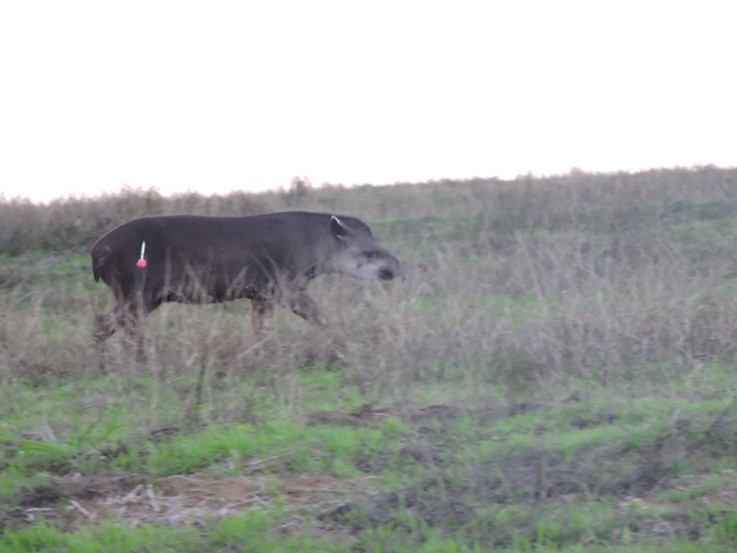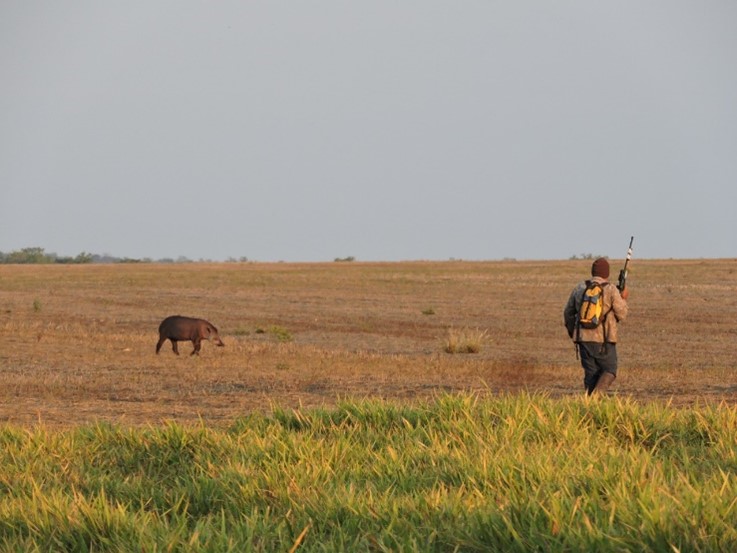Renowned conservation scientist, Dr. Patríca Medici, is studying and conserving tapirs in Brazil. The tapir is the largest land animal in South America.
Even though the tapir is a large animal not very many people have seen it in the wild. It is an extremely important species for the forest ecosystem, because they disperse a lot of fruit and berry seeds through their droppings, making tapirs known as “the gardeners of the forest”.
Patrícia uses DANiNJECT in her research both for immobilization and for taking biopsies without immobilizing. For biopsy we have developed a new more precise reusable biopsy-dart which improves the collection of usable biopsies.
Patricia wrote me earlier in May when she was doing field work in the Amazon: “Steffen, brief note to let you know that I love the new biopsy darts! Suuuuuper stable!”. We are very proud of this evaluation from Patrícia.
 IIt is almost impossible to find and immobilize tapirs in the forest. They must be darted when they move over open terrain between forest fragments. This emphasizes the importance of forest fragments not being to far apart in areas where forest fragmentation unfortunately is taking place.
IIt is almost impossible to find and immobilize tapirs in the forest. They must be darted when they move over open terrain between forest fragments. This emphasizes the importance of forest fragments not being to far apart in areas where forest fragmentation unfortunately is taking place.
 The pictures are from Tanguro Farm in the State of Mato Grosso in the Amazon. The scientist doing the darting is from the Lowland Tapir Conservation Initiative (LTCI) in Brazil. They have mounted a flash light (the white mount) on the barrel of their JMSP-rifle with 24Bar pressure to assist darting in the dark.
The pictures are from Tanguro Farm in the State of Mato Grosso in the Amazon. The scientist doing the darting is from the Lowland Tapir Conservation Initiative (LTCI) in Brazil. They have mounted a flash light (the white mount) on the barrel of their JMSP-rifle with 24Bar pressure to assist darting in the dark.
The tapirs are immobilized for mounting of GPS-collars and microchips and for collection of biological samples for health and genetic studies.
Apart from forest fragmentation and habitat loss Tapirs are threatened by road kills and hunting for meat and their tough hide.
There are four species of tapirs. Three of them are categorized as Endangered on IUCN Red-list, while the lowland tapir is considered Vulnerable.
A huge thank you to Dr. Patrícia Medici for her feedback to us on the equipment and for sharing some of her experiences from her important field work on Tapir in Brazil.


.jpg)

